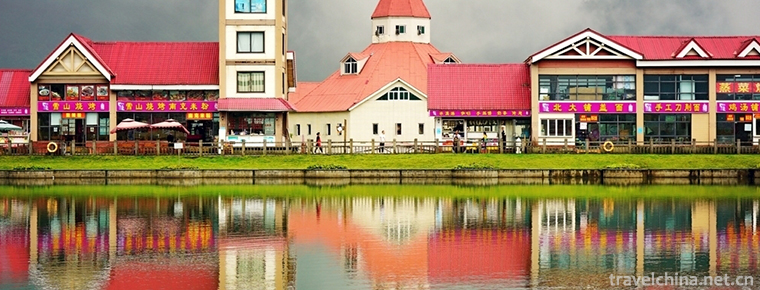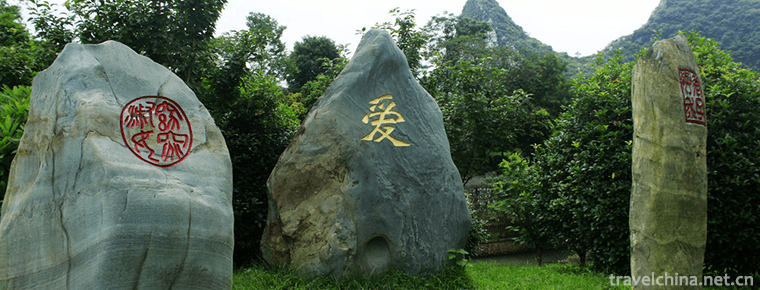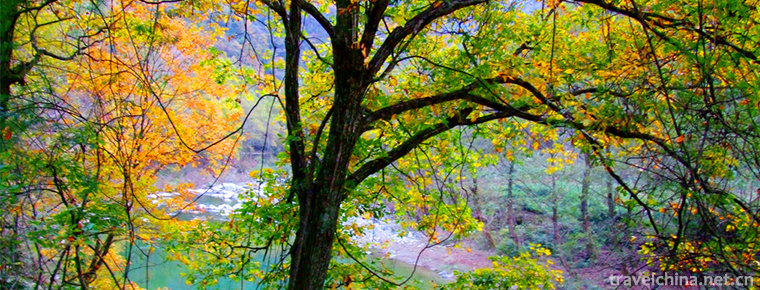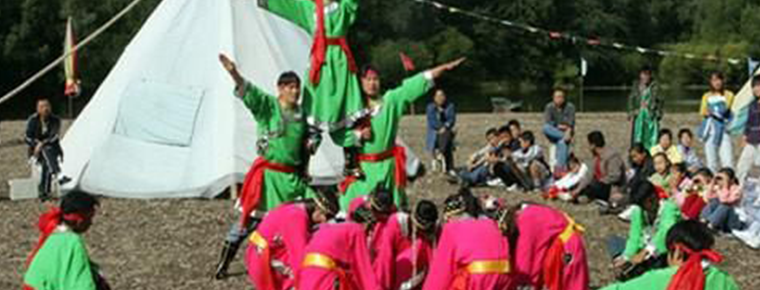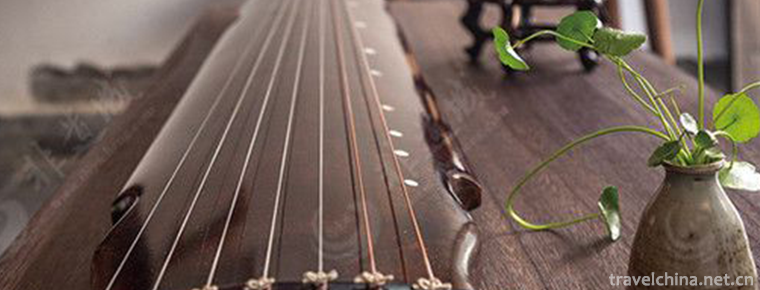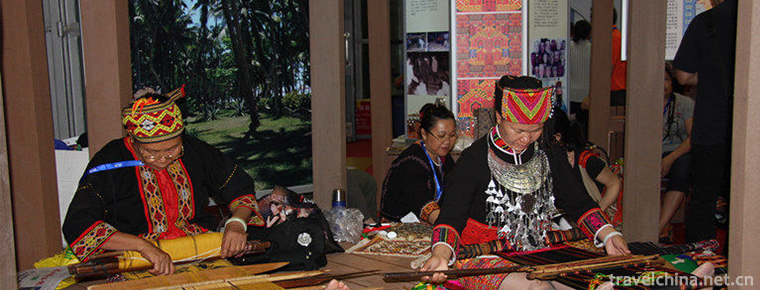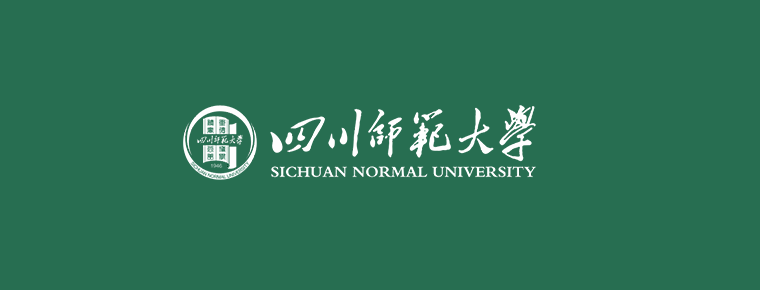Tujia Waving Dance
Tujia Waving Dance
Hand-waving dance is an ancient traditional dance of Tujia nationality. It mainly spreads in the Youshui River and Wujiang River basin at the junction of Hubei, Hunan, Chongqing and Guizhou. It mainly inherits Xiushan County, Youyang County, Tujia Autonomous County along the river in Chongqing, Laifeng County in Enshi Autonomous Prefecture in Hubei, Longshan and Yongshun in Xiangxi Autonomous Prefecture in Hunan Province. Now Enshi Tujia and Miao Autonomous Prefecture has adapted a new version of waving dance, which is easier to learn and inherit.
There are two kinds of waving dance: big waving and small waving. Small wave of hands, Tujia called "Sevbax (Sheba)" or "Sevbaxbax (Sheba)"; large wave of hands, Tujia called Yevtixhhex (Yeti Hei). It integrates dance art and sports fitness, and is known as "Oriental disco".
Wave dancing reflects Tujia people's production and life. For example, hunting dances show hunting activities and imitate animal movements. Including "chase monkey", "drag pheasant tail", "rhinoceros look at the moon", "grind Eagle wings", "jump clam" and more than ten actions. List the first batch of national intangible cultural heritage in China.
historical origin
The Origin of Culture
Tujia Waving Dance has a long history. According to the record of Huguang Tongzhi reproduced in Volume 32 of Tongzhi's Laifeng County Chronicle, it is said that in the Five Dynasties, "there were Pushe trees with wooden names in Manshui Village of Shizhou, and the Pushe people spoke in Mandarin. The ancestors of the former Chen clan cut a different tree at Dongmen Gate, and came to the car to take root again. Hundreds of flowers bloomed at four o'clock. Under the song and dance of Tan's descendants, the flowers fall. Take the hairpin instead. His surname goes to song, flowers never fall again, especially different. This passage vividly recounts the scene of people waving their hands around the Pushe tree more than a thousand years ago. It was the first wave dance of the Tujia people in Laifeng that was recorded in historical books.
First of all, waving dance originated from religious sacrificial activities. Tujia people respect their ancestors and love their leaders. In order not to forget their ancestors'achievements, they created a wave dance in memory of them. This custom still exists in Laifeng and other areas where waving dances are spread. In addition to offering sacrifices to eight gods in individual places, most of the priests, such as Duke Peng, Tian Haohuan, and Xiangyuan, are famous figures in Tujia history from the Five Dynasties to the Song Dynasty. They are "born as English, died as spirit" [Hand-laying inscriptions in Zhongzhai Temple Castle, Hedong Township, Laifeng County, Five Years of Jiaqing (1800)]. "Man Shu Xue Xue Zhu" Volume 10: "Pa's ancestor worship, drum and sacrifice. It is believed that the waving dance is a kind of dance for Tujia people to sacrifice their ancestors.
Second, Baihu Dance and Bayu Dance evolved and developed. "Huayang Guozhi Bazhi" contains: "Bashi is brave, singing and dancing to Lingyin people. The former apprentice Yangge, known as the King of Wu's war, danced before and after the song. Experts have proved that the song and dance of the Wuzhu Feiqi is the Bayu dance, and the Baihu dance is the predecessor of the Bayu dance. The characteristic of Waving Dance is to imitate the dragon, the tiger and the tiger. Its basic action is to show the white tiger. It is also said that the "spear and Yu" and "crossing and Yu" in Du You's "Tongdian" are the same as the military dances such as "armour", "line up", "bow and arrow" in the hand-waving dance. Therefore, it is inferred that the hand-waving dance and the Bayu dance have the same origin and different branches, which originated in the Zhou Dynasty.
Three theories originated from war. There are many legends among the people. Generally speaking, Duke Peng led the army to fight. In order to boost military prestige and morale, he ordered his subordinates to tempt the enemy by singing and dancing, or to drive away homesickness by waving their hands and singing. After the triumph of the battle, this kind of Waving Dance spread to the people.
Fourthly, Tujia people are naturally fond of singing and dancing, and wave dancing is purely an art activity of Tujia people's self-entertainment.
Fifth, in order to conquer nature and resist foreign invasion, ancient Tujia ancestors used a "wave" to build up their bones and gradually evolved into a later wave dance.
Sixth, in the Song Dynasty tomb at Tieluping, Hefeng County, Enshi Prefecture, there are 12 dancing servants, some crouching, some swinging left and right, and some dancing long shirts and sleeves along the mouth of a pottery VAT unearthed. The dancing posture is very similar to the single pendulum, double pendulum, gyration pendulum and side pendulum of the existing waving dance. This shows that in Song Dynasty, Tujia Waving Dance was very mature and group dance. Following up to the Qing Dynasty, the Records of Laifeng County in Western Hubei, Longshan County in Western Hunan, Yongshun County and literati poems all have detailed records and descriptions of Tujia waving dance.
All the above statements are enough to show that the history of Waving Dance is quite long, but they are not enough to show that it is the real origin. From the content and characteristics of waving dance, Waving Dance should originate from labor and social practice. This is the law that art both at home and abroad abide by.
Epidemic areas
Hand-waving dance is a traditional dance of Tujia nationality with a long history. It is spread in the Youshui River and Yuanshui River at the junction of Hunan, Hubei, Chongqing and Guizhou provinces, especially in the Youshui River. In Chongqing Youyang, Xiushan, Qianjiang, Pengshui, Shizhu, Hunan Yongshun, Longshan, Baojing, Guzhang, Hubei Laifeng, Enshi, Guizhou Riverside, Yinjiang and other places, there are records of hand-waving dance activities. Ancient Waving Dance mainly served in sacrifice and prayer activities. Besides eight gods, most of the Tusi kings, such as Duke Peng, Tian Hao-han, and the old officials, had their own names in history, with remarkable traces of sacrifice and ancestor worship. The names of waving dances vary from place to place. Longshan area of Hunan Province is called "Sheba Day". Baojing is called "Tiaonian". Yongshun is also called "Sheba Ba". Its folkloric significance is the same - - Praying for God. Nowadays, in Youyang County, which is known as "the land of waving dance", and the first batch of intangible cultural heritage declared by the State - Xiangxi Autonomous Prefecture, Waving Dance is the most popular activity.
Hand-waving dance is clearly recorded in the relevant county chronicles of Northwest Hunan. In the Twenty-eighth year of the Qianlong reign of the Qing Dynasty, Yongshun Prefecture chronicles, Customs Chapter, it is stated that "each village has a Hand-waving Hall, also known as ghost Hall, which is called the Yinshi Department of the late local officials." From the third to seventeenth day of the first month of the first month of each year. Men and women gather to dance long songs, known as waving hands, this custom still exists. Tongzhi Yongshun Gongsheng Peng Shiduo of the Qing Dynasty wrote a bamboo poem: "Jinzuo nest in Fushi City, water waves near the Tuwang Palace, thousands of red lights, a lingering hand song." All these show that waving dance, as a kind of large-scale folk dance popular among Tujia people, was quite popular in Northwest Hunan in the Qing Dynasty. Longshan County Chronicle and other Qing Dynasty chronicles have detailed records. The Tujia villages in Maogang, Qing'an and Luoshui areas of Yongding District all have Hand-shaking Hall or Tuwang Temple sites. Up to now, Tujia people still carry out ancestor worship and hand-shaking dance activities on these sites.
Law of Activity
The time for waving is called "March Hall" or "May Hall" in some places except February, March or May and June. The Tujia people in Yongding are held on "June 6" in the lunar calendar, but most of them are held between the third and seventeenth day of the first lunar month, mostly at night. Three days in short and seven days in length. The Tujia people in Youyang, Longshan and Baojing were held on the seventh day of February in the lunar calendar, which is called the "Sheba Day". Hand-waving activities are usually held in "Hand-waving Hall" or "Hand-waving Ping" or "Tuwang Temple". Every town with hundreds of households has a swing hall, and some have rows of towers, stage, etc. Laifengshemi Lake, Dahe River, Youyang County and other places have the vestiges of the pendulum. "Yongshun Mansion Records? Customs Chapter" compiled by Emperor Qianlong in the 28 years of Qing Dynasty contains: "Each village has a display hall, also known as the ghost hall, which is called the Yinsi Department of the deceased local officials. From the third to seventeenth day of the first month of every year, men and women gather together to dance and sing, which is called waving their hands. This custom still exists. Longshan County Chronicle compiled in the Ninth Year of Tongzhi Period of Qing Dynasty also records that "the God of Tumin Sai's native land, the old hall said to put his hand on the table for a certain God of Tusi, Chen Zuli, until the end of the day, a group of men and women merged. After paying, wearing quilts, beating drums and bowls, dancing and singing, eventually several nights. The period varies from January to March or May. When singing, men and women accompany each other and move forward and backward, so it is called waving hands. It can be seen that the ancient Waving Dance has relatively fixed performance time and venue.
Inheritance value
Hand-waving dance is the spiritual wealth created by the Tujia people for thousands of years. It is the epitome and artistic expression of the social production and development of the Tujia people in a long historical period. Its growth and development is accompanied by the whole process of the formation of the common language, common region, common economic life and common psychological quality of the Tujia ethnic community. It is the synthesis of Tujia folk culture. Combination carrier. The value of waving dance can not be replaced by ordinary art forms. It has extremely important social value in the process of social and historical development of Tujia nationality.
1. Inheriting National Culture and Strengthening National Consciousness
The ancient hand-waving dance is not only a religious sacrificial activity, but also a big classroom for the national history education. The lyrics of "Tima" in the Waving Dance express the memory of ancestors, the fear of ghosts and gods, and the yearning for harvest and peace. The waving dance scene is solemn and solemn, the wizard is dignified and sacred, and the sacrificial team is devout and obsessed. In this powerful and instructive environment, the education of the tribal people has been accomplished imperceptibly. Tujia people have language, but no words. In the era without words and books, such sacrifices and celebrations undoubtedly become the best place for wizards to teach certain skills, rituals, customs and tribal historical knowledge. The rulers appropriately borrowed the wave dance activities to strengthen national religious beliefs, imprison tribal ideology, eulogize national history, inherit and strengthen national characteristics.
2. Condense the National Spirit and Enhance National Identity
From the content point of view, Waving Dance is not only a ritual to recall the history of ancestors'war, migration and entrepreneurship, but also a reproduction of the scenes of the national production and life. It is a living historical picture of Tujia people. In essence, sacrificing and recalling ancestors reinforce the common spiritual sustenance and totem worship of the nation; the imitative actions of "fishing and hunting dance" and "farming dance" in waving dance to the production and labor process emphasize the national identity in common language, common region, common economic life and common psychological characteristics, and strengthen national cohesion. As an important carrier of Tujia culture, Waving Dance is the body language symbol of Tujia people's psychological identity. This original ecological cultural form plays a decisive role in the formation of the common psychological quality of the nation.
3. Commodity Circulation to Enliven National Economy
Tujia people live in the mountainous areas bordering Hunan, Chongqing, Hubei and Guizhou. Here, mountains and ravines are overlapping, and the villages are very scattered. The footprints of the villages are different from each other for tens of miles. It is very inconvenient for people to communicate and communicate with each other. Moreover, the Tujia nationality region has to work in the fields all the year round because of its "cold mountains and cold waters, with very little harvest", which makes people feel even less happy in their "fresh moments of leisure". As a kind of large-scale dance and sacrificial activities, Waving Dance not only attracts and gathers the Tujia people, but also the Han and Miao people in the waving hall, making the waving hall the center of people's communication and communication. Many businessmen bring daily necessities that Tujia people can not produce to the showhouse, and use the Tujia people's "ignorance of businessmen" characteristics to start business. Therefore, wave dancing is not only a way of entertainment for people, but also a platform for communication between the nation and the outside world, which promotes commodity circulation and economic prosperity.
4. Enhancing physical and mental health and prospering cultural life
Hand-waving dance belongs to both artistic category and sports means, and has strong self-entertainment and entertainment humanity. The so-called self-entertainment is to vent emotions and amuse the body and mind through physical exercises of practitioners, while entertainment is to satisfy the external audience, can attract the audience and arouse the resonance of the audience. Hand-waving dance moves are shoulder-backed to drive the whole body, hands with a direction to shake down the side hand, body around twist forward, it seems strange and interesting, interesting. Long-term practice of waving dance can help practitioners correct shoulder, chest, back, leg and other bad postures, overcome physical and motor defects, improve the level of human body function, improve physical condition, and have a high value of health and fitness.
Wave dancing is also an elegant and generous literary and artistic activity. In the accompaniment of vigorous singing and concise gongs and drums, waving dancing is practised. It is like coming to the natural environment of pastoral songs, which makes people's soul obtain intense passion, beautiful yearning and aesthetic pleasure. Therefore, whether it is watching a performance or experiencing it personally, people can get pleasant emotional experience and beautiful enjoyment from it.
Inheritance
Nowadays, the distribution of hand-waving dance in Enshi Tujia and Miao Autonomous Prefecture includes Laifeng County and Xuan'en and Hefeng County, most of Longshan and Yongshun Counties in Western Hunan Autonomous Prefecture and a small part of their adjacent counties, and a small part of Youyang and Qianjiang Counties in Chongqing City, forming a cultural circle of Tujia hand-waving dance with Youshui River as its link.
The distribution of wave dancing in Laifeng County is mainly concentrated in Baifusi Town and Manshui Township, especially in Shemi paste village in the east of Hedong District of Baifusi Town, which has complete inheritance and original characteristics.
There are only two stone tablets left in Shemi Lake Hand-swing Hall, which were erected in the 27 years of Qingdaoguang and the 2 years of Guangxu for maintenance. This shows that it has a long history. In the hall, three gods, Prince Peng, Hero Tian and Old Officials, are worshipped. Before liberation, the villages inhabited by Tujia people in the border of Laifeng County were all built with "Hand-shaking Hall". There were four complete handshaking halls preserved, and five sites have been found.
Hand-waving dance is inherited in the form of family and village. Except for native teachers, the dancers are not professional artists and have no strict teacher-inheritance relationship. They are inherited in the form of family and village, with inherited representatives and representative groups. In this regard, the people's government of Laifeng County allocated special funds to conduct in-depth field surveys on the distribution and outstanding inheritance artists of the township and village dancing in the county town, register and register, and establish art archives. Investigation shows that the county dance mainly concentrates on Baifusi Town Hedong Banshemi paste village.
In 1957, the Enshi area and Hubei Province held a literary performance. Peng Zuqiu led Peng Changyi, Peng Changsong, Jia Guangmei, Peng Zhihua, Zeng Yinxiang and Zeng Lingcui to play in Enshi and Wuhan. Laifeng's Waving Dance was highly valued by regional and provincial leaders. The Provincial Cultural Bureau took it as an excellent program to perform in Hubei Theatre. Since then, wave dancing began to move from the mountains east of Fenghe River to the mountains outside.
Since the wave dance ascended the hall of elegance in Wuhan, many professional literary and artistic workers realized that Enshi had not only Tujia nationality, but also wave dance, and came to Fengfeng in succession.
In 1958, the Wuhan People's Art Theatre sent directors to study Waving Dance in Shemi Lake. Subsequently, the provincial opera and dance troupe took Waving Dance as its material and created the famous national dance Tujia Happy Giving Patriotic Grain.
In 1959, Laifeng's Waving Dance team played in Hubei Theatre and was cordially received by Wang Renzhong, Zhang Tingxue and other leaders.
On May 21, 1980, Laifeng established Tujia Autonomous County, where an unprecedented wave dance performance was held.
On December 1, 1983, Enshi Autonomous Prefecture was established. Laifeng Culture Department sent special people to the Prefecture to direct the guidance of waving dance, forming a thousand Waving Dance teams, forming an unprecedented Waving Dance parade, and through the media at all levels, making Waving Dance famous throughout the country. Since then, Changyang Tujia Autonomous County and Youyang Tujia Autonomous County in Chongqing have sent people to Feng to learn waving dance, Waving Dance has become the symbol of Tujia.
In the process of inheriting waving dance, a number of representative figures emerged, such as Peng Rongzi, Peng Changyi, Peng Dazhao and Peng Chengjin. Now the whole village of Shemi Lake, men and women, old and young, everyone can jump and wave their hands, the youngest is only 8 years old.
Dance waving has its specific environment - natural environment and human environment. Previously, the Tujia people in the border areas of Hubei, Hunan, Chongqing and Guizhou also danced hand dancing, but nowadays it is very rare to see it, which is related to the cultural environment of ethnic integration and the gradual Han culture of Tujia people. The Tujia people in the Qingjiang River Basin used to dance hand-waving dance, but nowadays they have almost stopped dancing, which is related to the differences of geographical environment and human environment.
In modern society, only Laifeng, Xuan En, Longshan, Yongshun, Baojing and the surrounding areas along the Youshui River are still dancing. The original "big wave" of Laifeng has been lost. Only the original "small wave" of Baifusi Town Shemi Paste Village is still preserved. Historically, the scope of the epidemic is shrinking, so it is urgent to strengthen protection.
Especially in recent years, foreign cultures have gradually penetrated into the Tujia area. Young people lack familiarity with local cultures, and their continued interest in traditional arts has been weakening. More and more Tujia villagers have come out of the mountains to study and work, and fewer people remain at home, and the number of people who are not old or young, and the number of people who pass on naturally decreases, etc., are also in urgent need of intentions. We should guide them with knowledge and pay more attention to the protection of excellent intangible cultural heritage.

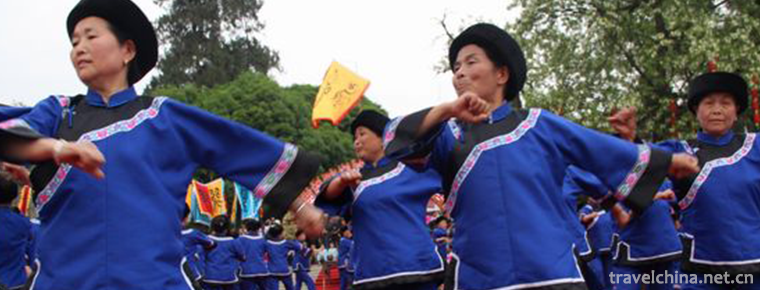
-
Serdang snow mountain Xiling snow mountain
Xiling Snow Mountain, located in Dayi County, Chengdu City, Sichuan Province, is only 95 kilometers away from Chengdu, with a total area of 483 square kilometers. It is a world natural heritage.
Views: 139 Time 2018-10-30 -
Chinese Shared bicycle
Shared bicycle refers to the bicycle sharing service provided by enterprises in campus, subway station, bus station, residential area,.
Views: 183 Time 2018-11-13 -
Taining Scenic Tourist Area
Taining Scenic Spot: World Geopark, National AAAAA Class Tourist Spot, National Key Scenic Spot, National Forest Park, National Geopark, National Key Cultural Relics Protection Unit.
Views: 182 Time 2018-12-08 -
Nanxi Mountain Scenic Area Guilin
Guilin Nanxi Mountain Scenic Area (that is, Guilin Nanxi Mountain Park) is located in the south of Guilin City, about 1 kilometer north of the railway station. The two peaks of Nanxi Mountain confront.
Views: 71 Time 2019-01-13 -
Yangba Subtropical Ecotourism Scenic Area
Yangba subtropical eco-tourism scenic spot is located in Yangba Town, south of Kangxian Town, Longnan City, Gansu Province, 84 kilometers away from the county town.
Views: 173 Time 2019-03-02 -
Gulunmu Festival of Oroqen Nationality
The Oroqen ethnic group is one of the minorities with a small population in China. Since ancient times, it has multiplied and lived in the deep forest of Heilongjiang Valley and Xing'an Mountains.
Views: 148 Time 2019-04-28 -
Guqin art
Guqin art is embodied as a solo art form of flat stringed instruments. It also includes both singing and playing, as well as the ensemble of piano and xiao..
Views: 91 Time 2019-05-01 -
Traditional Textile Dyeing Weaving and Embroidery Techniques of the Li Nationality
The traditional spinning, dyeing, weaving and embroidery techniques of the Li nationality, the traditional handicraft techniques of Hainan Province, are one of the national intangible cultural heritag.
Views: 92 Time 2019-05-12 -
Calculation with an abacus
Liu Hong (129-210 A.D.), a character Zhuo, a descendant of Liu Xing, the king of Lu in the Eastern Han Dynasty, is an outstanding astronomer and mathematician in ancient China. He is the inventor of a.
Views: 160 Time 2019-08-10 -
Sichuan Normal University
Sichuan Normal University is one of the key universities in Sichuan Province and the first national universities to implement the "Basic Capacity Building Project of Colleges and Universities in .
Views: 138 Time 2019-08-31 -
Gongmu mountain
Gongmu mountain is located 5 kilometers southwest of Yanyuan County, Liangshan Yi Autonomous Prefecture, Sichuan Province. It is named after the stone on the mountain because it looks like two male and female genitals..
Views: 330 Time 2020-10-16 -
Climate characteristics of Mianyang
Mianyang City belongs to the humid monsoon climate zone of north subtropical mountain. In 2016, the average temperature was 17.9c, the days of excellent air quality were 279, and the average annual precipitation was 823.3mm. .
Views: 87 Time 2020-12-14
